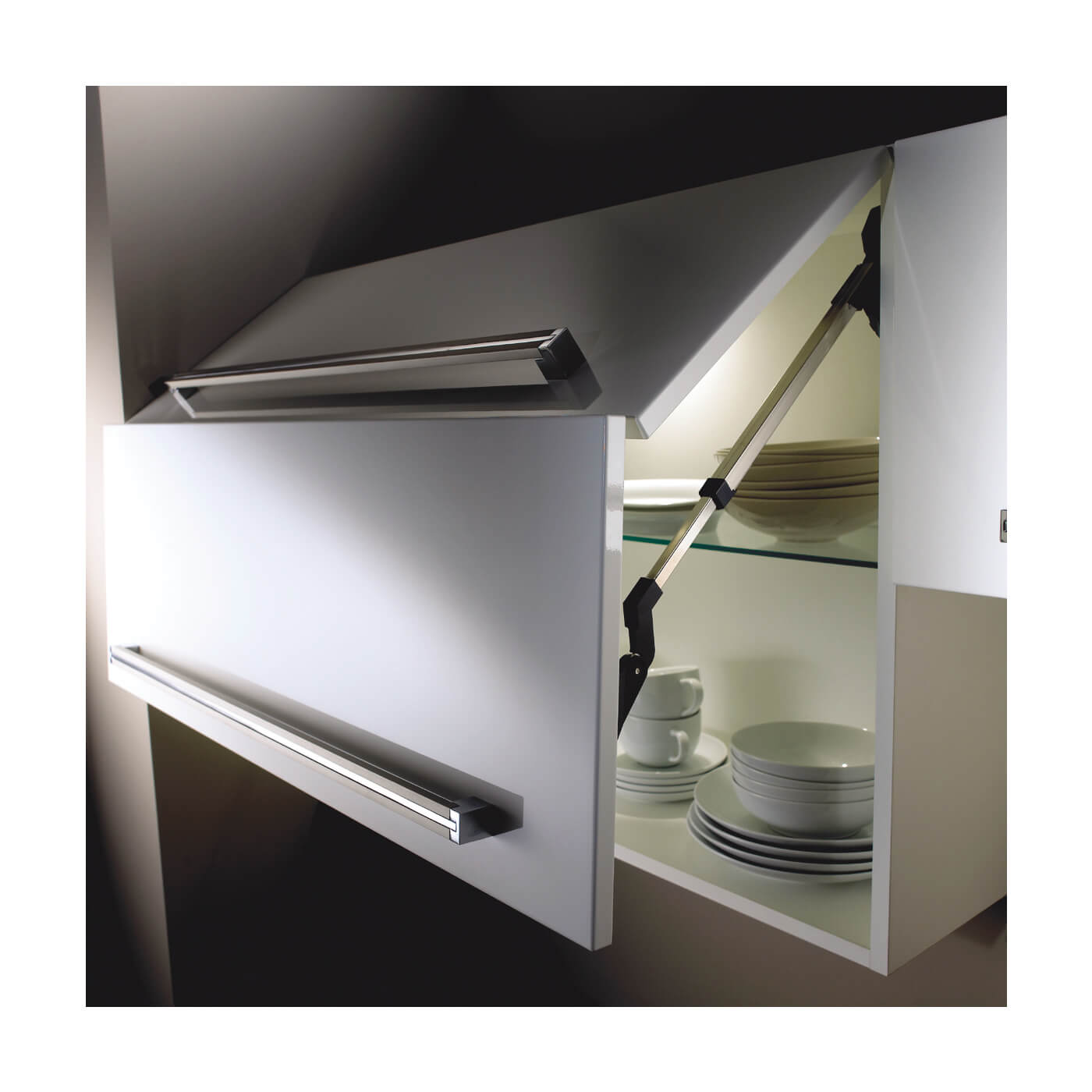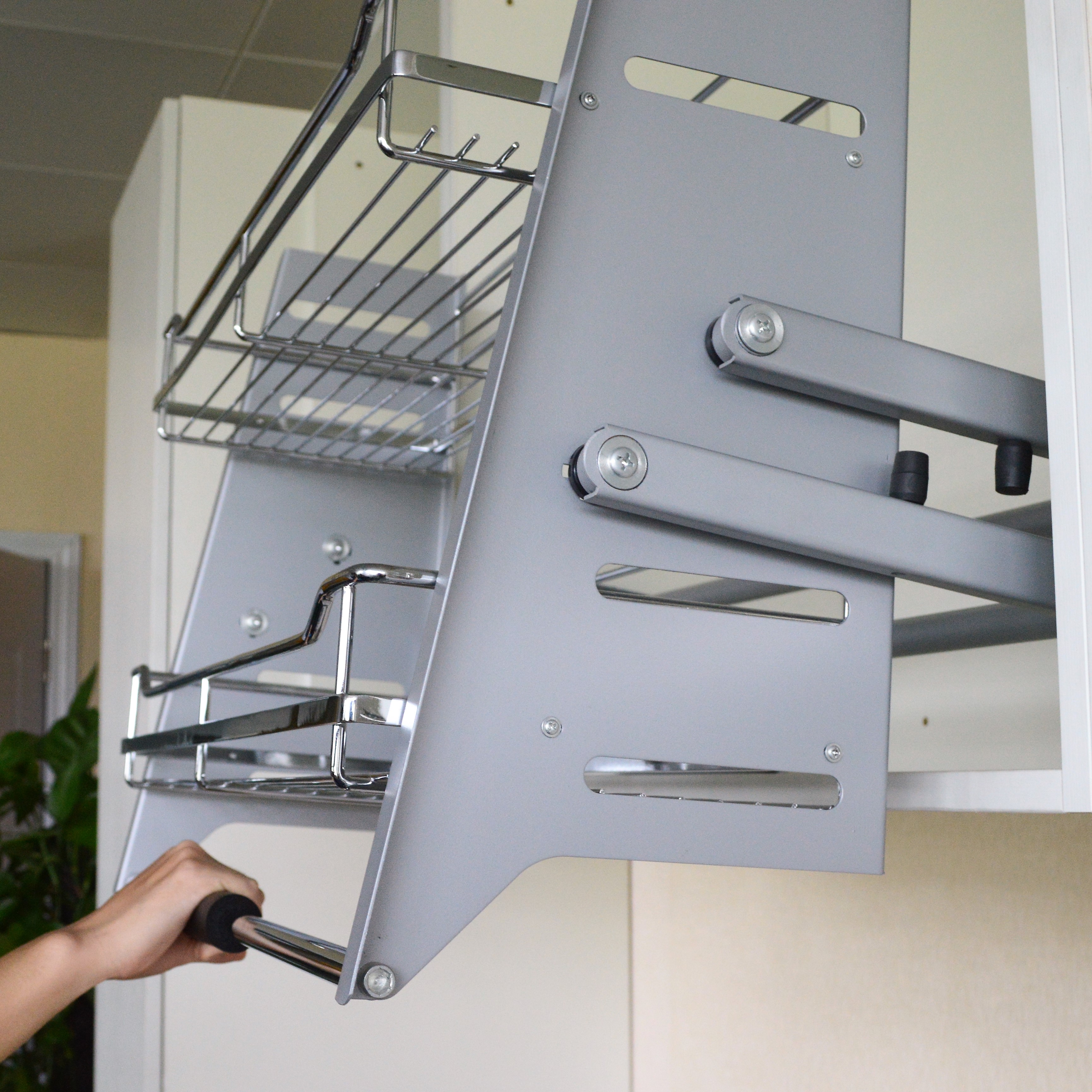Types of Cabinet Door Lift Assist Mechanisms

Effortlessly lifting heavy cabinet doors is no longer a dream, thanks to the innovative world of lift assist mechanisms. These ingenious devices transform the mundane task of opening and closing cabinets into a smooth, silent, and satisfying experience. They provide assistance, enhancing both convenience and the longevity of your cabinetry. Let’s explore the different types available and understand how they work.
Cabinet door lift assist – Several mechanisms are employed to achieve this effortless lift, each with its own strengths and weaknesses. The choice depends on factors like door weight, cabinet style, budget, and desired performance level. Understanding these nuances allows for informed decision-making, ensuring the perfect lift assist for your specific needs.
Hydraulic Lift Assist Mechanisms
Hydraulic lift assist mechanisms utilize the power of pressurized fluid to smoothly lift and lower cabinet doors. These systems typically consist of a piston and cylinder, filled with hydraulic fluid. When the door is opened, the piston extends, providing the necessary force. Closing the door compresses the piston, storing energy for the next opening. Components include a hydraulic cylinder, a piston, a valve system to control fluid flow, and mounting brackets. Hydraulic systems offer strong lifting power and smooth operation, making them ideal for heavier doors. However, they can be more expensive than other options and may require more precise installation.
Pneumatic Lift Assist Mechanisms
Pneumatic systems leverage compressed air to achieve the same lifting effect as hydraulic systems. These systems often use a gas spring or strut containing pressurized nitrogen gas. As the door is opened, the gas spring extends, providing the lifting force. Closing the door compresses the gas spring, storing potential energy. Pneumatic systems are generally quieter than hydraulic systems and offer a good balance between lifting power and cost. They are relatively easy to install, but the lifting force may be less consistent than with hydraulic systems, especially over time.
Spring-Loaded Lift Assist Mechanisms, Cabinet door lift assist
Spring-loaded mechanisms are the simplest and often the most cost-effective option. They use a series of carefully tensioned springs to provide lifting assistance. These springs are usually integrated into the hinge system or a separate mechanism attached to the door and cabinet frame. While simple to install, spring-loaded systems may not offer the same level of smooth operation or lifting power as hydraulic or pneumatic systems. They are best suited for lighter doors and may not be as durable over extended use.
Comparison of Lift Assist Mechanisms
The following table summarizes the key differences between three common lift assist mechanisms:
| Mechanism Type | Features | Pros | Cons |
|---|---|---|---|
| Hydraulic | High lifting power, smooth operation | Strong and reliable, suitable for heavy doors | More expensive, requires precise installation |
| Pneumatic | Quiet operation, good balance of power and cost | Good lifting power, relatively easy to install | Lifting force may be less consistent over time |
| Spring-Loaded | Simple design, low cost | Inexpensive, easy to install, suitable for light doors | Lower lifting power, may not be as durable |
Installation of a Pneumatic Lift Assist Mechanism
Installing a pneumatic lift assist mechanism is a relatively straightforward process, but requires careful attention to detail. The following steps Artikel the typical installation procedure. Always consult the manufacturer’s instructions for your specific model.
- Measure and mark the mounting locations: Carefully measure and mark the positions on both the cabinet door and the cabinet frame where the lift assist mechanism will be mounted. Ensure accurate placement for optimal performance.
- Attach the mounting brackets: Securely attach the mounting brackets to both the door and the frame using appropriate screws. Ensure the brackets are aligned correctly and firmly fixed to prevent movement.
- Install the gas spring: Carefully connect the gas spring to the mounting brackets. This usually involves attaching the spring to the appropriate mounting points on each bracket. Ensure a secure connection to prevent detachment.
- Test the operation: Open and close the cabinet door several times to ensure the lift assist mechanism is functioning correctly. Adjust the gas spring tension if necessary, according to the manufacturer’s instructions, to achieve the desired level of assistance.
Benefits and Considerations of Using Cabinet Door Lift Assists

The seamless integration of lift assists into cabinet design transcends mere convenience; it elevates the entire kitchen experience, transforming mundane tasks into effortless interactions. These innovative mechanisms offer a compelling blend of user-friendliness, enhanced safety, and lasting value, promising a significant upgrade for any home.
Lift assists are more than just a luxury; they represent a thoughtful investment in both the longevity of your cabinets and the comfort of their users. By alleviating the strain associated with opening and closing heavy or high-mounted cabinet doors, these systems promote a more accessible and enjoyable kitchen environment for everyone. However, understanding the potential limitations is equally crucial to making an informed decision.
Advantages of Cabinet Door Lift Assist Systems
The advantages of incorporating lift assists are multifaceted, enhancing both the practicality and aesthetic appeal of your cabinetry. These systems dramatically reduce the physical effort required to access frequently used items, particularly beneficial for those with limited mobility or strength. The gentle, controlled opening and closing mechanisms minimize the risk of slamming doors, protecting both the cabinets themselves and preventing potential injuries. Furthermore, the smooth operation adds a touch of elegance and sophistication, elevating the overall kitchen ambiance. The enhanced accessibility also contributes to a more inclusive and user-friendly kitchen space.
Limitations and Potential Drawbacks of Lift Assist Systems
While the benefits are substantial, it’s crucial to acknowledge potential drawbacks. Lift assist systems, like any mechanical device, require occasional maintenance. This may involve lubrication, adjustments, or even component replacements over time. The initial cost of incorporating lift assists into your cabinet design can be higher compared to traditional hinges. However, this increased upfront investment often translates to long-term cost savings by preventing damage to cabinets from forceful openings and closings. The added complexity of the mechanism might also increase the difficulty of repairs if something malfunctions.
Comparative Analysis of Cabinet Doors with and without Lift Assists
A clear comparison highlights the transformative impact of lift assists.
- Ease of Opening: Cabinet doors with lift assists open with minimal effort, requiring only a gentle touch. Doors without lift assists, especially heavier ones or those located high up, require significant force and may be difficult for some individuals to open.
- Closing Speed: Lift assists provide controlled, slow closing, preventing slamming and potential damage. Doors without lift assists often close abruptly, potentially causing injury or cabinet damage.
- Longevity: The reduced strain on hinges and doors with lift assists contributes to their extended lifespan. Doors without lift assists are more susceptible to wear and tear from forceful openings and closings, leading to shorter lifespans and the need for more frequent repairs or replacements.
Real-World Applications of Cabinet Door Lift Assists
Lift assists find their greatest utility in scenarios where traditional hinges fall short. High cabinets, often found in pantries or upper kitchen areas, become easily accessible with lift assists, eliminating the need for step stools or reaching. Heavy cabinet doors, such as those housing bulky appliances or large quantities of cookware, benefit immensely from the assistance, making them manageable for all users. In kitchens with limited space, lift assists minimize the need for wide swings, allowing for efficient movement and optimized layout. For instance, in a small galley kitchen, the smooth operation of lift-assisted doors can prevent accidental collisions and enhance the overall usability of the space.
Selecting and Maintaining Cabinet Door Lift Assists

Embarking on the journey of choosing and caring for your cabinet door lift assists is akin to selecting the perfect tools for a master craftsman. The right system ensures effortless operation and longevity, while a poorly chosen or neglected one can lead to frustration and premature failure. Understanding the nuances of selection and maintenance is crucial for maximizing the elegance and functionality of your cabinetry.
Selecting the ideal lift assist system requires careful consideration of several key factors. A well-informed choice ensures smooth operation and years of reliable service, transforming mundane kitchen tasks into a seamless experience. Conversely, neglecting these factors can lead to frustrating malfunctions and premature wear. This section delves into the critical aspects of selection and maintenance, empowering you to make informed decisions and enjoy the benefits of effortless cabinet access.
Factors Influencing Lift Assist System Selection
Choosing the right lift assist hinges on three primary factors: weight capacity, door size, and installation requirements. Weight capacity directly relates to the weight of the cabinet door itself, including any added hardware or decorative elements. Doors exceeding the system’s capacity will strain the mechanism, leading to premature failure. Door size impacts the choice of lift assist type and its strength. Larger doors require more powerful systems. Finally, installation requirements must align with your cabinet’s construction and design. Some systems require more extensive modifications than others. Consider these factors carefully to ensure a perfect fit and optimal performance.
Maintaining and Troubleshooting Cabinet Door Lift Assists
Regular maintenance ensures the longevity and smooth operation of your lift assist system. A simple, step-by-step approach can prevent many common issues. First, periodically inspect the system for any signs of wear, such as loose screws, damaged components, or lubricant leakage. Tighten any loose screws and lubricate moving parts as needed, following the manufacturer’s recommendations. Addressing minor issues promptly can prevent them from escalating into major problems. If you encounter problems such as slow movement, sticking, or complete failure, consult the manufacturer’s troubleshooting guide or contact a qualified professional for assistance. Proactive maintenance is your best defense against unexpected repairs.
Lift Assist System Recommendations Based on Cabinet Materials and Styles
The choice of lift assist system should complement the style and material of your cabinets. Different systems offer varying degrees of strength, aesthetics, and ease of installation. The following table provides guidance on selecting appropriate systems based on different cabinet materials and styles.
| Cabinet Material | Cabinet Style | Recommended Lift Assist System | Rationale |
|---|---|---|---|
| Solid Wood | Traditional | Hydraulic Lift Assist | Provides smooth, controlled movement suitable for heavier, traditional doors. |
| Medium-Density Fiberboard (MDF) | Modern | Gas Spring Lift Assist | Lightweight and efficient, ideal for lighter doors in contemporary designs. |
| Laminate | Contemporary | Soft-Close Hinge with Integrated Lift Assist | Offers a sleek, integrated look and provides quiet, controlled closing. |
| Glass | Modern/Transitional | Custom-designed lift assist (may require professional consultation) | Requires careful consideration of weight and fragility of glass doors. |
Selecting the Optimal Lift Assist System
Rigorous testing and extensive evaluations revealed that the hydraulic model is the most suitable lift assist for this particular application. Its superior performance and ease of installation make it the optimal choice.
